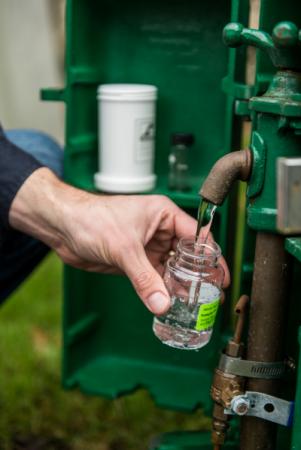Prevention of Legionella
Water sitting in pipes for long periods of time can create water quality challenges that should be addressed prior to returning to more normal operations.
Three potential health risks from stagnant water include:
- Conditions where harmful bacteria, such as Legionella, can grow and potentially make people sick if inhaled in water droplets or steam (such as in the shower or from a fine spray)
- Causing increased plumbing corrosion and higher levels of metals in the water, including lead if it is present in the plumbing
- Decreased disinfectant residual which may allow disease-causing organisms (e.g., bacteria and viruses) to grow in water used for drinking and cooking
Building owners or tenants should take the following actions to reduce these risks:
- Run all water fixtures at least weekly. While buildings are closed or used significantly less, you should run all water fixtures for 10 – 30 minutes each week to refresh the water in the building’s pipes. Follow guidance from the Environmental Science Policy & Research Institute on how to flush the water in your building. The goal is to refresh all the water in the building pipes with fresh water from TVWD’s water mains beneath the street.
- Check your hot water system. Set your water heater to at least 140 degrees F. When flushing hot water taps, run the water until it reaches its highest temperature.
HAZARD WARNING: 140 degrees is very hot and hot water can cause burns to your skin at 120 degrees. You or a plumber can install anti-scald valves or faucets to prevent burns.
- Take steps before reopening. Make sure to use personal protective equipment when performing building maintenance.
Risks to water quality in large buildings under normal operations
Outside of this pandemic, owners and managers of certain types of buildings should already be taking steps to protect their water quality and address risks from possible Legionella growth. The National Academies of Sciences, Engineering, and Medicine recommends that all public buildings should be taking steps similar to those recommended above. However, the CDC specifically recommends taking these steps for the following types of buildings or devices:
- Healthcare Facilities
- Buildings housing people primarily over 65 years of age
- Buildings with multiple housing units and a central hot water system (e.g., hotel or high-rise apartment building)
- Buildings with 10 or more stories
- Cooling towers
- Hot tubs
- Decorative fountains
- Centrally installed misters, atomizers, air washers, or humidifiers
TVWD recommends building owners or managers develop and implement a water management program. These programs help building managers maintain water quality to reduce the risk of Legionella growth and spread. The CDC, Center for Disease Control, has some free resources provided by the links below.
The ANSI/ASHRAE Standard also sells their industry-standard resource for use when developing a water management plan. See Risk Management for Building Water Systems
If you have questions, please call TVWD's Water Quality staff at: 503-848-3000.


